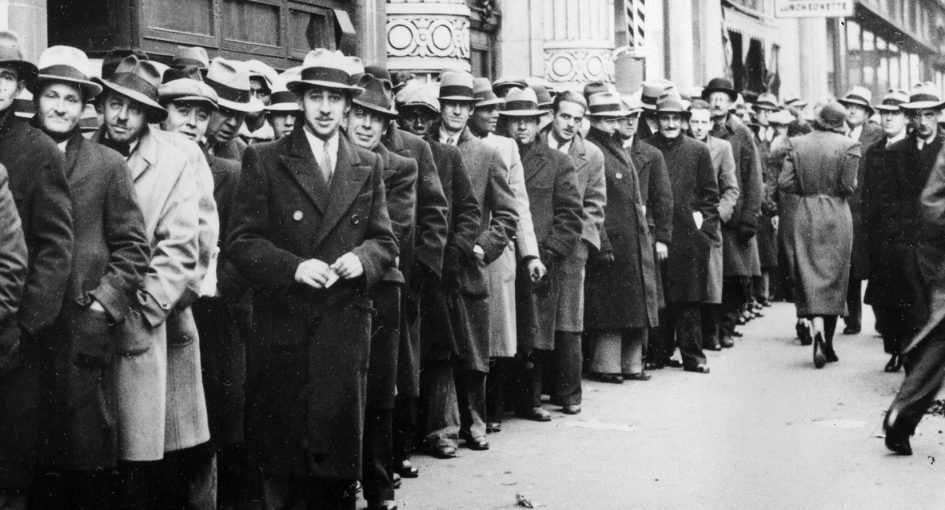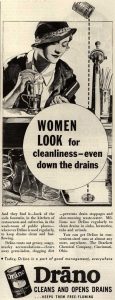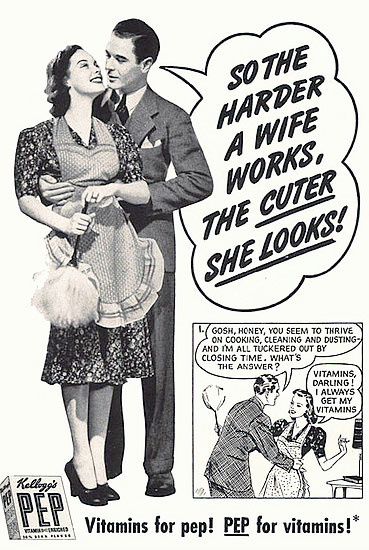
We often discuss current issues on this blog, but it’s important to remember our roots. Sometimes when you look back at history, it can inspire ideas for the future. At the very least, you’ll learn something. This week, we’ll cover the 1930s.
The Great Depression was the worst financial crisis in history. 13 to 15 million Americans were without work. They were hesitant — or unable — to make any unnecessary purchases. Advertisers finally understood the concept of using media to gain awareness and rack up sales. But by the 1930s, advertising had to take a turn from promoting and selling products to selling gender roles. Despite any progress the women’s movement had made in the 1920s, the Depression erased much of it, as women had to stay home and keep the family together while men went out and searched for work. Advertisers had to react accordingly.
 In the early 1930s, a movement was underway by the government. They wanted employers to deny women work so that the men could attain employment. Ladies Home Journal described homemaking as an adventure and a learning experience, a journey that women just had to take. Magazines began using advertisements to show just how exciting and rewarding staying home can be rather than working in a filthy factory. For five years, the government prohibited more than one family member, under the same roof, from working. And if you were married, there was no way you’d be making a dime. But women became creative, and started lying about their marital status in order to acquire work.
In the early 1930s, a movement was underway by the government. They wanted employers to deny women work so that the men could attain employment. Ladies Home Journal described homemaking as an adventure and a learning experience, a journey that women just had to take. Magazines began using advertisements to show just how exciting and rewarding staying home can be rather than working in a filthy factory. For five years, the government prohibited more than one family member, under the same roof, from working. And if you were married, there was no way you’d be making a dime. But women became creative, and started lying about their marital status in order to acquire work.
The government began hiring artists to create advertisements based on American culture and history. They used imagery with celebrities, soldiers and even Santa Claus to sway the likes of many citizens. These artists’ started using “Fireside Talk” in their ads to connect with Americans on a more intimate level. These advertisements placed women in a kitchen or taking care of children, while images of men were placed in the workplace.
 Such advertisements indicated what was “needed” at the time — women at home taking care of the children while the men brought home the bacon. This stayed the same for 10 years, until men were needed on the battlefield and women were needed back in the workforce.
Such advertisements indicated what was “needed” at the time — women at home taking care of the children while the men brought home the bacon. This stayed the same for 10 years, until men were needed on the battlefield and women were needed back in the workforce.
Beyond the world of gender roles, brands had something bigger to determine — whether or not they should spend on advertising at all. The ones who did ended up thriving, while others suffered deep mistrust among consumers, or disappeared altogether.
Advertising can very much influence the way we act and think about certain situations. The 1930s is proof of how strong advertisements were able to influence and sway the decisions of many homes across America, even when the economy was at its very worst. And while today people are more prone to tuning advertising out, that influence is stronger than you might think.